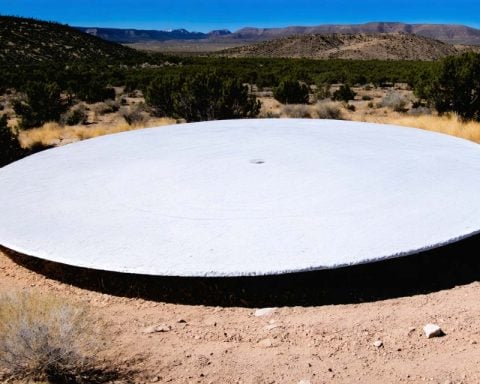- The storm’s impact in Kentucky is severe, with at least 11 fatalities due to flooding.
- Coal Run is particularly affected, with eight casualties reported in the town.
- Emergency services are actively conducting rescues in Louisville amid challenging conditions.
- Tennessee faces evacuations due to a breached levee, and Georgia records one storm-related death.
- Winds from the storm threaten areas from North Carolina to New Jersey with possible damage.
- A looming winter storm is expected to bring significant snowfall to Kansas, Missouri, and Oklahoma.
- Temperatures are set to plummet as the storm moves east, with over 65 million people expected to face harsh wind chills.
- North Dakota warns of the risk of frostbite with rapid-onset during the cold snap.
- Emphasizes the importance of vigilance and preparation for severe weather conditions.
Beneath the steel-gray sky, Kentucky reels from a relentless storm, leaving at least 11 lives claimed by the merciless floodwaters. Echoes of warnings from Gov. Andy Beshear reached across communities as raging torrents swallowed roads, urging vigilance and comparative shelter. The dramatic deluge turned streets into rivers, trapping unsuspecting drivers and residents.
Coal Run, a town now synonymous with despair, witnesses eight of these tragedies alone, while hope flickers elsewhere as rescue teams navigate perilous waters, weaving through Louisville with tales of salvation. Across Tennessee, anxiety grows as a breached levee spurs frantic evacuations, while Georgia records its own storm-related casualty.
Regional winds whip across landscapes from North Carolina to New Jersey, threatening to snap mighty oaks and scatter debris like autumn leaves. Amidst this chaos, another tempest broods on the horizon, promising a white blanket of snow to drape Kansas, Missouri, and Oklahoma by Tuesday. For those in Nashville or Richmond, the idea of six inches seems slight, until confronted with the biting cold that follows.
As the storm travels eastward, temperatures will dive sharply. More than 65 million souls brace against the cold snap as wind chills promise to be merciless. North Dakota warns of frostbite as a specter, waiting for the unwary in minutes, while cities like Minneapolis and Kansas City prepare to battle yet another blast of the arctic breath.
In these moments, nature’s fierceness reminds us of our smallness and vulnerability, emphasizing the critical importance of heeding warnings and preparing adequately for calamity when the sky’s wrath descends.
Surviving Nature’s Wrath: Essential Tips to Stay Safe During Severe Weather
Real-World Use Cases: Lessons from the Storms
The recent catastrophic weather events in Kentucky and surrounding states demonstrate the power of nature and the importance of preparedness. Areas such as Coal Run bear the brunt, showing that even regions often considered lesser-known can suffer greatly. Learning from such events can help others prepare and respond more effectively to similar emergencies, whether through better infrastructure planning or community drills.
Pros and Cons Overview: Early Warning Systems
Pros:
– Advanced Notification: Early warning systems provide crucial information that can save lives by giving residents time to evacuate or shelter in place.
– Reduced Property Damage: Being forewarned allows individuals and municipalities to take precautionary measures to protect homes and infrastructure.
Cons:
– False Alarms: Repeated false alarms may lead to complacency over time, decreasing the overall effectiveness of these warnings.
– Technological Barriers: Inaccurate or delayed information, especially in rural areas, can limit the effectiveness of these systems.
Features and Pricing: Weather Monitoring Solutions
Modern technology offers various solutions such as home weather stations, smartphone apps, and professional meteorological services. Basic home weather stations start around $100 and can provide localized data crucial for individual safety. Meanwhile, apps often range from free to a small subscription fee, offering forecasts, alerts, and real-time storm tracking.
Controversies & Limitations: Climate Change and Policy
The increasing frequency and severity of storms raise questions about the role of climate change and the effectiveness of current policies. Critics argue for stronger environmental measures and infrastructure reforms to combat future disasters. However, significant policy changes require time and consensus, which are often slow to materialize.
Market Forecasts & Industry Trends: Growing Demand for Resilience
As climate events increase, there’s a rising demand for resilient infrastructure and technology. The smart home market, including weather monitoring systems, expects continued growth, driven by consumer awareness and technological advancements.
Security & Sustainability: Preparing for Future Storms
Communities are increasingly prioritizing sustainability through resilient design strategies that include green infrastructure and smart grid technology, which help mitigate storm impacts and recover quickly from disasters.
How-To Steps & Life Hacks: Staying Safe During Severe Weather
1. Plan Ahead: Ensure you have an emergency plan, including routes and contacts, and discuss it with your family.
2. Pack an Emergency Kit: Include essentials such as water, non-perishable food, flashlights, batteries, and first aid supplies.
3. Stay Informed: Monitor weather updates via a reliable news source, weather app, or emergency alert system.
4. Secure Property: Reinforce windows, trim trees, and clear debris that could become hazardous during storms.
5. Evacuate if Needed: Don’t hesitate to evacuate if advised by local authorities—property can be replaced, lives cannot.
Actionable Recommendations
– Subscribe to local alerts through your phone or a weather app to receive timely updates.
– Invest in a reliable weather monitoring system tailored to your regional needs to track local conditions.
– Join community groups focused on disaster preparedness to share resources and information.
By integrating these practical strategies and solutions, individuals and communities can better prepare for and respond to severe weather, ultimately reducing risk and enhancing resilience in the face of nature’s unpredictability.
For more on preparing and responding to severe weather, visit Weather.gov.



















